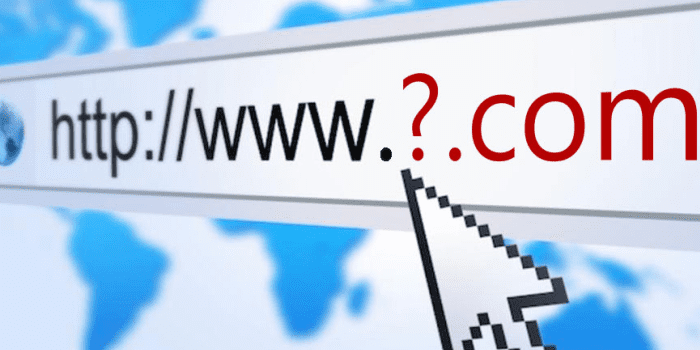Domain Removal or Change in a Microsoft 365 Tenant-to-Tenant Migration: Challenges, Issues, and Solutions
Migrating between Microsoft 365 tenants is a complex process that involves moving users, data, and configurations from one tenant to another. One of the most critical and challenging aspects of this process is the removal or change of a domain. Properly managing domains during a migration is essential to ensure business continuity, data integrity, and minimize disruptions for end-users.
In this article, we will explore the reasons why it is necessary to change or remove a domain during a migration, the common challenges and issues that can arise—including the importance of a domain not being registered in a tenant until it is removed from the other—and provide a guide on how to effectively tackle this process. If you need specialized assistance, our team at Cloud Fighters is ready to help you.
Table of Contents
- Introduction
- Reasons for Changing or Removing a Domain
- Common Challenges and Issues
- How to Perform Domain Change or Removal
- Best Practices
- Conclusion
- How We Can Help You
Introduction
During a Microsoft 365 tenant-to-tenant migration, managing custom domains is a crucial task. Domains are closely linked to user identities, email addresses, authentication services, and more. A mistake in this process can result in significant disruptions, data loss, or security issues.
One of the most important aspects to consider is that a custom domain cannot be registered in two different tenants simultaneously. That is, before you can add a domain to the destination tenant, you must remove it from the source tenant. This adds an additional level of complexity to the migration process, as it requires careful planning to minimize downtime and ensure that services continue to function correctly.
Reasons for Changing or Removing a Domain
There are several situations where it is necessary to change or remove a domain during a migration:
- Mergers and Acquisitions: The acquired company may need to adopt the corporate domain of the parent company.
- Rebranding: Changes in corporate identity that require updating to a new domain.
- Business Separation: A division of the company may need to remove the old domain and establish a new one.
- Tenant Consolidation: Reducing costs and complexity by unifying multiple tenants under a single domain.
Common Challenges and Issues
Dependencies and Associated Services
Domains are associated with:
- User Accounts and Groups: User Principal Name (UPN), SMTP addresses, and aliases.
- Services and Applications: Exchange Online, SharePoint, Teams, and third-party applications.
- Certificates and Authentication: SSL certificates and authentication methods may depend on the domain.
Service Disruption
- Downtime: Risk of interruptions in email access and other services.
- Data Loss: Possibility of losing incoming emails if MX records are not updated correctly.
Naming Conflicts and UPN
- Duplicates: Conflicts when migrating users with the same username in the destination tenant.
- Incompatibilities: Issues with applications or scripts that depend on specific usernames or email addresses.
DNS Propagation
- Delays: DNS changes can take up to 48 hours to propagate.
- Incorrect Configurations: Errors in record configuration can lead to service disruptions.
Domain Registration in Tenants
It’s crucial to understand that:
- Domain Exclusivity: A custom domain cannot be registered in more than one tenant at a time.
- Correct Sequence: You must remove the domain from the source tenant before adding it to the destination tenant.
- Timing: This process requires coordination to minimize impact on users.
How to Perform Domain Change or Removal
Planning and Preparation
- Dependency Analysis: Identify all services and applications using the domain.
- Communication: Inform stakeholders and users about the change and its implications.
- Maintenance Window: Schedule the change during periods of low activity.
Domain Verification in the Destination Tenant
- Add the Domain: In the admin portal of the destination tenant, attempt to add the custom domain.
- Expected Error: If the domain is still registered in the source tenant, you will receive an error indicating that the domain is already in use.
- Necessary Action: This confirms that you must remove the domain from the source tenant before proceeding.
Updating UPN and Email Addresses
- Modify UPN in the Source Tenant: Change users’ UPN so they no longer use the domain you wish to remove.
- Update SMTP Addresses: Remove the domain from primary and secondary email addresses.
- Verification: Ensure there are no remaining references to the domain in the source tenant.
Updating DNS Records
- MX and Autodiscover Records: Update records to point to the destination tenant.
- SPF, DKIM, and DMARC Records: Ensure they are correctly configured in the destination tenant.
- Reduce TTL: Before the change, reduce the TTL to speed up propagation.
Removing the Domain from the Source Tenant
- Verify Dependencies: Confirm that the domain is not associated with any objects in the source tenant.
- Remove the Domain: In the admin portal, remove the domain from the source tenant.
- Confirmation: Wait for the process to complete and the domain to be available to add to the destination tenant.
Post-Migration Verification and Testing
- Add the Domain to the Destination Tenant: You can now add and verify the domain in the destination tenant.
- Update UPN and SMTP Addresses: Configure users in the destination tenant to use the correct domain.
- Functionality Tests: Verify sending and receiving emails, access to services, etc.
Best Practices
- Detailed Planning: Define a clear plan with timelines and responsibilities.
- Continuous Communication: Keep users and stakeholders informed.
- Use Automated Scripts: Facilitate updating UPN and email addresses.
- Data Backup: Perform backups before making critical changes.
- Real-Time Monitoring: Monitor services during the process.
- Pilot Testing: If possible, conduct tests in a controlled environment.
Conclusion
Changing or removing domains during a Microsoft 365 tenant-to-tenant migration is a delicate process that requires careful planning and precise execution. It’s crucial to understand that a domain cannot be registered in the destination tenant until it has been removed from the source tenant. The challenges associated with this process can be significant, but with the right strategy and knowledge of the necessary steps, it’s possible to minimize risks and ensure a smooth transition.
If you’re unsure how to proceed or prefer to have experts handle the migration, we’re here to help.
How We Can Help You
At Cloud Fighters, we have a team specialized in Microsoft 365 migrations and domain management. We can:
- Advise you on planning and preparing the migration.
- Execute the domain change or removal safely and efficiently.
- Provide support throughout the process to minimize disruptions.
Don’t hesitate to contact us if you need assistance or want us to handle your migration. We are committed to your company’s technological success and ready to take your organization to the next level.
At Cloud Fighters, we offer personalized solutions and specialized support to ensure your migration is successful and hassle-free.
Contact us today to start your project with complete confidence!


 Português
Português Español
Español